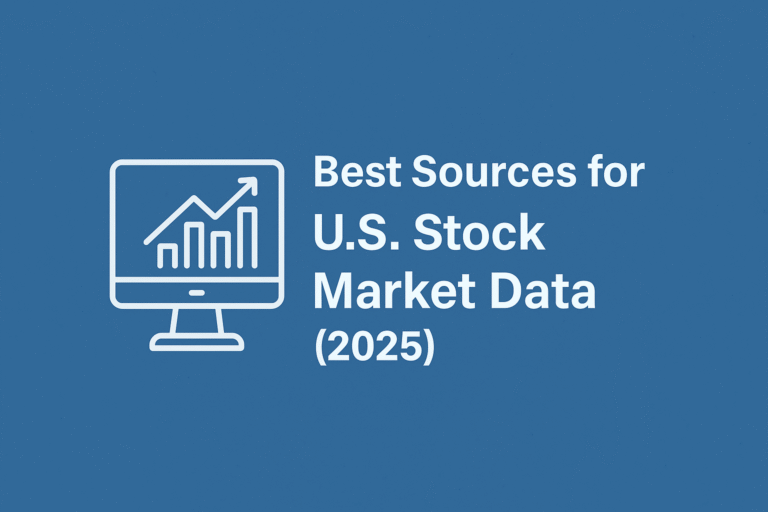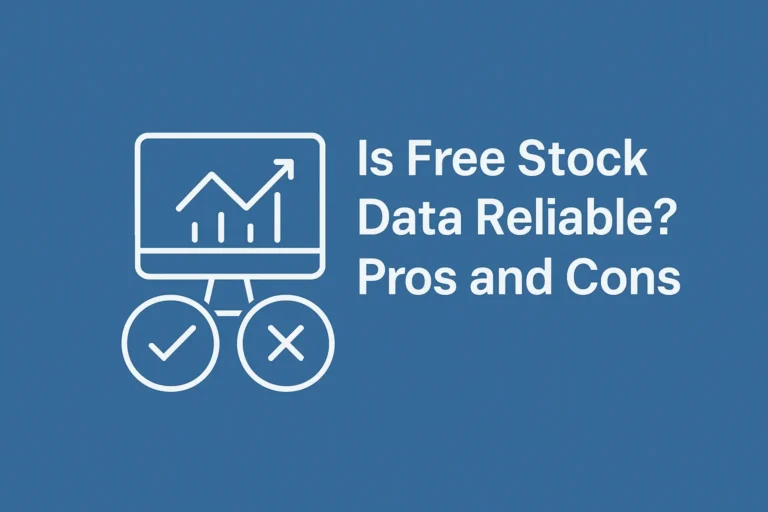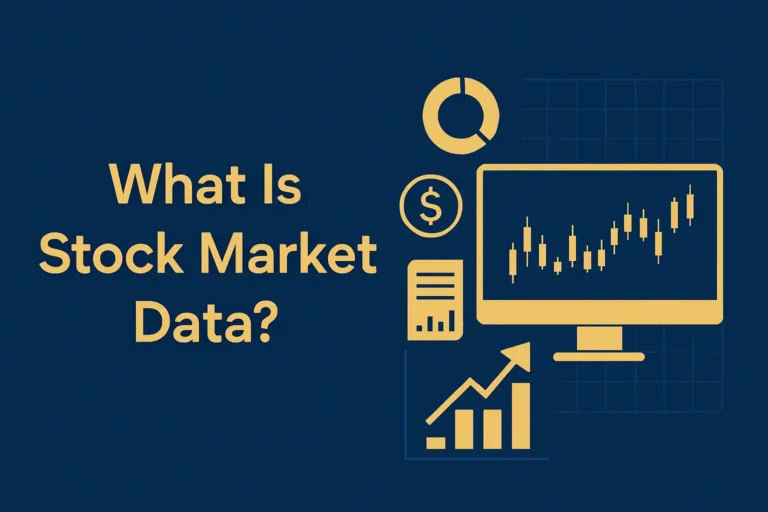Real-Time vs End-of-Day (EOD) Stock Data
Stock market data comes in various forms, but two of the most commonly used types are real-time data and end-of-day (EOD) data. Understanding the differences between them is crucial for selecting the right tools, strategies, and platforms based on your trading or investing goals.
What Is Real-Time Stock Data?
Real-time stock data reflects market prices and activity as they happen — with updates occurring instantly, usually within milliseconds. This includes live quotes, bid/ask prices, trade volumes, and market depth.
Key Features:
- Instantaneous updates during market hours
- Used by day traders and scalpers
- Often includes Level 1 or Level 2 data
- Usually comes with a subscription cost
Use Cases:
- Intraday trading
- Options trading
- Scalping and high-frequency strategies
- Triggering automated trading alerts or bots
What Is End-of-Day (EOD) Stock Data?
End-of-day (EOD) stock data is published after the market closes and provides a summary of the day’s trading activity. It includes the open, high, low, close (OHLC), and volume.
Key Features:
- Delivered once daily, after market close
- More affordable or free
- Ideal for swing traders and long-term investors
- Used for backtesting and historical analysis
Use Cases:
- Portfolio management
- Backtesting strategies
- Daily stock screening
- Technical analysis on daily charts
Comparison Table: Real-Time vs EOD Stock Data
| Feature | Real-Time Data | End-of-Day (EOD) Data |
|---|---|---|
| Update Frequency | Instant (live) | Once daily |
| Latency | Low (milliseconds) | High (delivered post-close) |
| Use Case | Day trading, scalping | Swing/position trading, research |
| Cost | Typically paid | Usually free or low-cost |
| Includes Level 2? | Yes (often) | No |
| Availability | During trading hours | After market close |
Which Type Should You Use?
| If You Are… | Use This |
|---|---|
| Day Trader | Real-Time Data |
| Swing Trader | EOD Data |
| Algorithmic Developer | Both (Real-Time for execution, EOD for backtesting) |
| Investor Doing Weekly Reviews | EOD Data |
| News-Based Trader | Real-Time Data |
Popular Sources for Each Data Type
Real-Time Data Providers:
- TradingView (Pro Plans)
- Finviz Elite
- Interactive Brokers
- Bloomberg Terminal
EOD Data Providers:
- Yahoo Finance
- Alpha Vantage (free tier)
- EOD Historical Data
- MarketWatch
Conclusion
Real-time and end-of-day stock data serve different purposes. If you’re actively trading intraday or building bots, real-time data is essential. If you’re researching, backtesting, or investing based on daily charts, EOD data is often sufficient — and much more cost-effective.
Understanding the difference helps you avoid overpaying for data you don’t need and ensures you’re using the right tools for your trading style.
FAQs
1. Is real-time stock data necessary for beginners?
Not always. EOD data is usually enough unless you’re trading intraday.
2. Why is real-time data often delayed on free platforms?
Exchanges charge fees for real-time data, so most free tools provide delayed feeds by default.
3. Can I backtest using real-time data?
Yes, but it’s more expensive. Most backtests use historical EOD data.
4. What is the typical delay for free stock data?
Usually 15 to 20 minutes behind actual market activity.
5. Do real-time platforms show pre-market and after-hours data?
Yes, premium platforms often include extended trading hours data.




